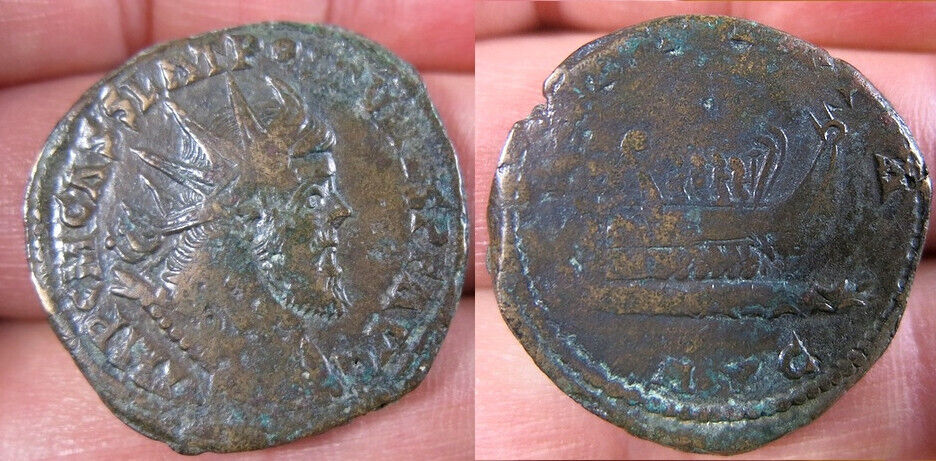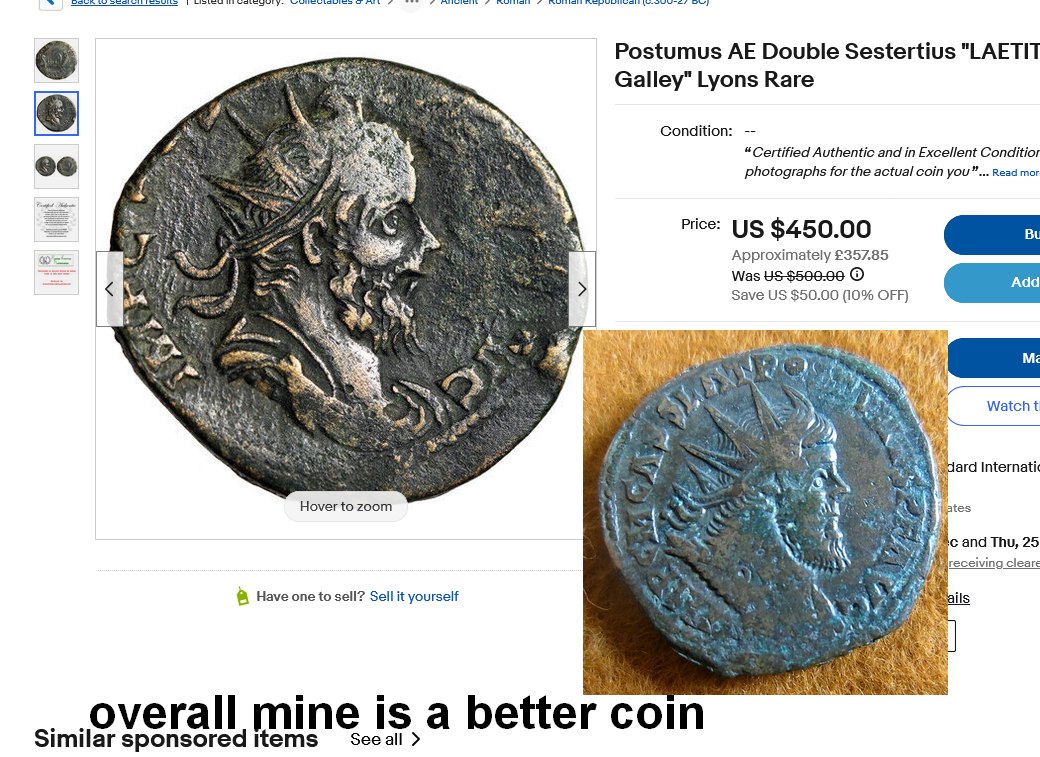
|
|

|
For currency conversion you can use this good service: https://www.xe.com/ucc/
To either ENQUIRE or BUY a piece click the button you will see with each item.
No impersonal 'shopping basket' system here. I prefer to do all this personally by email.
This is a rare variety with an unusual depiction of a Roman galley
The new coin fell out of use but was revived by the rebel emperor Postumus (259–268), who ruled a breakaway empire consisting of Britain, Gaul and parts of Germany, and was keen to associate his regime with a reformed coinage system. Postumus issued his own version of the double sestertius, often taking very worn old sestertii and using these to overstrike his own portrait and legends on, probably because of a shortage of metal. After his reign, the Roman coinage system degenerated further with almost the only circulating pieces being very debased double-denarius coins, known to us as antoniniani or 'radiates' (from the use of the radiate crown). Older coins like the sestertius soon dropped entirely out of use, with many being melted down to create new radiates. By the fourth century AD even these had been discontinued and an entirely new coinage system had been created.
From my own collection
Price: 235.00 GBP
For currency conversion you can use this good service: https://www.xe.com/ucc/


Home | About This Site | Privacy Statement | Gallery | Testimonials | Guarantees
About Collectors' Resources pages | What's New
Search | Site Map | Contact Us

